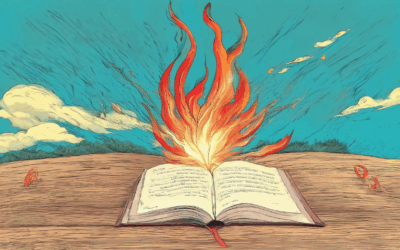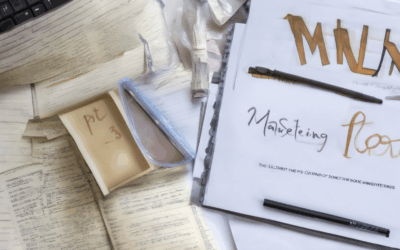The art of storytelling thrives on the evolution of characters, and one of the most compelling aspects of fiction is the journey of a character from inception to realization. Character arcs, the trajectory of a protagonist’s growth, transformation, or development, are the backbone of any compelling narrative. Whether it’s the gradual descent into villainy, the redemption of a fallen hero, or the quiet strength of a supportive side character, understanding the dynamics of character arcs is crucial for authors aiming to craft immersive worlds. In this comprehensive guide, we will explore the intricacies of character arcs in fiction, delving into their types, significance, and impact on storytelling. From the foundational principles to real-world examples, this exploration will shed light on why character arcs remain an indispensable element in the literary landscape.
Key Takeaways
– Understanding Character Arcs: A character arc is the evolution of a protagonist through events, reflecting personal growth, development, and changes in personality or beliefs.
– Phases of a Character Arc:
– Introduction/Setup: Establishes the character’s initial traits, beliefs, or flaws.
– Inciting Incident: A disruptive event forces the character into self-discovery.
– Middle Development: Challenges and experiences lead to growth or transformation.
– Resolution/Climax: Culminates in realization or meaningful change.
– Aftermath: Growth reflected in behavior, decisions, or relationships.
– Notable Examples:
– Atticus Finch in To Kill a Mockingbird showcases moral growth.
– Hamlet’s journey from idealism to tragic realism.
– Harry Potter’s transformation from an orphan to a resilient leader.
– Importance of Character Arcs: Enhances storytelling by creating emotional engagement, clear structure, highlighting themes, and fostering memorable experiences.
– Character Arc Considerations:
– Not every character needs a detailed arc; major roles like protagonists, antagonists, and supporting characters benefit most.
– Types include flat, static, linear, and nonlinear arcs.
– Develop arcs by identifying purposes, choosing suitable types, establishing key events, and ensuring consistent behavior.
– Comprehensive Guide: For deeper insights, explore resources on crafting characters and arcs at James Whitfield Thomson’s website.

What Are the 4 Types of Character Development?
In literature, character development is a crucial aspect that helps authors create relatable and multi-dimensional figures. Below are the four primary types of character development:
- Dynamic Characters : These are characters who undergo significant transformation throughout the story. They evolve emotionally, mentally, or physically, often in response to external events or internal struggles. An example is Scout Finch from “To Kill a Mockingbird,” who learns about injustice and moral complexity during his journey.
- Static Characters : In contrast, static characters remain unchanged. Their personality, beliefs, and behaviors don’t evolve significantly. While they may play important roles, they don’t grow or develop over time. A classic example is Atticus Finch, who embodies justice and integrity but doesn’t change his core values.
- Round Characters : Round characters are complex and multifaceted. They possess depth, with intricate motivations and backgrounds. They are often portrayed with flaws and strengths, making them believable and engaging. Elizabeth Bennet from “Pride and Prejudice” is a well-known round character due to her intelligence and emotional depth.
- Flat Characters : Flat characters lack depth and are often used for comedic effect or to serve a specific purpose in the plot. They typically exhibit one or two traits and don’t evolve or show much nuance. WORM from “Catch-22” is an example of a flat character, known primarily for his obsession with his own importance.
Understanding these types of character development allows writers to craft stories that resonate with readers, offering a range of personalities and growth arcs. By balancing dynamic and static characters, authors can create narratives that feel authentic and thought-provoking.
What Are the 5 Story Arcs?
An effective story arc is a structural tool used in narrative writing to organize the progression of events in a story. It helps authors guide readers through the plot and keeps the story coherent and engaging. Below are the five essential components of a story arc:
- Exposition
- This is the foundation of the story where the setting, characters, and the central conflict are introduced.
- Example: In “Harry Potter and the Sorcerer’s Stone,” the exposition introduces Harry Potter, his family history, and the magical world he inhabits.
- Rising Action
- This phase develops the plot, leading up to the main conflict. It establishes the stakes and sets up the challenges the protagonist will face.
- Example: In “To Kill a Mockingbird,” the rising action builds the tension around the trial of Tom Robinson and the societal pressures faced by Atticus Finch.
- Climax
- The climax is the turning point where the main conflict reaches its highest pitch. It often involves a confrontation or resolution of the central issue.
- Example: In “The Great Gatsby,” the climax occurs when Jay Gatsby realizes Daisy is in love with Nick Carraway, leading to tragic consequences.
- Falling Action
- After the climax, the story moves toward its conclusion. This phase resolves remaining subplots and brings the story to its final resolution.
- Example: In “1984,” the falling action wraps up the resistance against the Party and the ultimate fate of Winston Smith.
- Resolution
- The resolution ties up loose ends and provides closure to the story. It answers unanswered questions and reflects on the significance of the events.
- Example: In “The Catcher in the Rye,” the resolution leaves Holden Caulfield reflecting on his experiences and the state of the world, prompting readers to think about their own lives.
By understanding and applying these story arcs, writers can craft compelling narratives that engage readers and maintain their interest throughout the story.

What Are the Four Arcs?
The concept of character arcs is a fundamental aspect of storytelling, helping authors and creators to map out the growth, decline, or transformation of their characters throughout a narrative. Below are the four primary types of character arcs:
- Positive Change Arc :
This arc follows a character’s journey from an initial state to a point of growth or achievement. Examples include stories where a character overcomes fear, discovers hidden potential, or evolves morally. A classic example is the protagonist in a coming-of-age story. - Negative Change Arc :
In this arc, the character experiences a decline or regression. This could involve a fall from grace, a struggle with internal demons, or a descent into villainy. Tragic hero tales often follow this pattern, showing the character’s undoing. - Flat Arc :
A flat arc occurs when the character remains unchanged throughout the story. This is less common but can be effective in certain genres, such as slice-of-life narratives or depictions of static antiheroes. The character’s lack of development creates a deliberate contrast to the dynamic arcs of other characters. - Anti-Arc :
The anti-arc represents the opposite of traditional character development. Instead of growth or decline, the character regresses or becomes increasingly flawed. This arc often centers around antiheroes who actively resist change or spiral into self-destruction.
Understanding these arcs allows writers to craft complex and relatable characters, making their stories more engaging and emotionally resonant. For further exploration of storytelling techniques and character development, visit James Whitfield Thomson to discover insights and resources tailored for writers.

Understanding the Character Arc in a Novel
A character arc is the evolution or transformation of a protagonist through the events of a story. It reflects their personal growth, development, and changes in personality, beliefs, or motivations over time. A well-crafted character arc adds depth and relatability to the narrative, allowing readers to connect with the character’s journey.
Key Phases of a Character Arc
- Introduction/Setup: The character begins with certain traits, beliefs, or flaws that define their initial nature. This sets the foundation for their development.
- Inciting Incident: A catalyst event or conflict disrupts the character’s equilibrium, forcing them into a journey of self-discovery and growth.
- Middle Development: Through a series of challenges and experiences, the character learns, grows, or evolves. This phase often involves overcoming obstacles or facing moral dilemmas.
- Resolution/Climax: The character reaches a point of realization or transformation. They may achieve self-actualization, or their growth culminates in a meaningful change.
- Aftermath: The character’s growth is reflected in their behavior, decisions, or relationships post-journey.
Examples of Character Arcs
Notable character arcs in literature demonstrate how effectively authors portray transformation:
- In To Kill a Mockingbird by Harper Lee, Atticus Finch undergoes a moral arc as he fights for justice despite societal prejudice, teaching his children about courage and integrity.
- The character arc of Hamlet in Shakespeare’s play mirrors an anti-hero’s journey, showing his progression from idealism to tragic realism.
- Harry Potter’s transformation from an orphaned outcast to a brave leader in J.K. Rowling’s series exemplifies the power of self-discovery and resilience.
Importance of Character Arcs
A compelling character arc enhances storytelling by:
- Creating emotional engagement with readers.
- Providing a clear narrative structure.
- Highlighting themes and motifs essential to the story.
- Fostering memorable character experiences.
Improving Storytelling Techniques
Authors like James Whitfield Thomson masterfully craft character arcs, offering insights into narrative development. His works explore complex characters and their journeys, illustrating the art of storytelling through deep characterization.
For more resources on character development and storytelling techniques, visit our website . Explore articles on crafting compelling characters and achieving authentic character arcs in your writing.
Conclusion
A well-executed character arc is the heart of any great story. By guiding readers through the protagonist’s journey, authors like James Whitfield Thomson create narratives that resonate long after the final page. Understanding and applying these principles can elevate your own writing, making your stories more engaging and impactful.
What Are Good Character Arcs?
A well-crafted character arc is essential for creating relatable and memorable characters in stories. A good character arc typically follows a journey of growth, transformation, or self-discovery. Here are some key elements of a successful character arc:
1. Setup
- Introduce the character with distinct traits, motivations, and flaws.
- Establish their background, personality, and relationships with others.
- Provide a clear driving force for their actions and decisions.
2. Confrontation
- Present challenges, conflicts, or obstacles that push the character to evolve.
- Create internal and external conflicts that test their resolve and strengths.
- Allow the character to face their fears, insecurities, or past traumas.
3. Climax
- Introduce a major turning point or crisis that forces significant change.
- Create a moment of vulnerability or epiphany where the character reflects on their life.
- Build suspense and tension leading to a pivotal decision or realization.
4. Resolution
- Show the character’s growth or transformation resulting from the experiences.
- Demonstrate how they’ve changed, developed new skills, or gained wisdom.
- Provide closure to their personal journey while leaving room for future growth.
Examples of Great Character Arcs:
- A protagonist who starts as timid and becomes confident through overcoming public speaking fears.
- A character who evolves from a naive youth to a seasoned leader after facing adversity.
- An antihero who rediscovers their morality and chooses to act selflessly.
By carefully crafting these elements, authors can create characters that resonate with readers and leave a lasting impression.

Does Every Character in a Novel Need an Arc?
Not every character in a novel requires a traditional “character arc,” but most characters benefit from some level of development or progression. The necessity of a character arc depends on the character’s role and significance to the story.
Minor characters who don’t play a fundamental role, like background extras or tertiary figures, often don’t need a detailed arc. Their presence may be limited to specific scenes or functions, such as providing context or advancing the plot indirectly.
However, most major characters, including protagonists, antagonists, and supporting characters, typically benefit from having a defined character arc. A character arc refers to the journey or development a character undergoes throughout the story, often leading to growth, transformation, or deeper understanding of themselves.
Some common reasons why characters develop arcs include:
- The protagonist usually needs a clear journey or transformation to drive the story forward.
- Antagonists often have motivations or backstories that contribute to the conflict.
- Supporting characters may have their own arcs to add depth and credibility to their roles.
Types of character arcs include:
- Flat Arc: Characters remain unchanged throughout the story.
- Static Arc: Characters develop slowly or minimally.
- Linear Arc: Characters grow steadily over time.
- Nonlinear Arc: Characters’ development occurs out of chronological order.
To create a character arc, consider the following steps:
- Identify the character’s purpose and role in the story.
- Determine the type of arc that suits their development.
- Establish key moments or events that will shape their growth.
- Ensure consistency in their behavior and actions aligns with their arc.
In conclusion, while not every character needs a complex arc, most benefit from some form of development to enhance the story and resonate with readers. Consider the character’s role and the overall narrative when deciding the depth of their arc.
For more tips on crafting compelling characters and arcs, visit our literary resources .





0 Comments